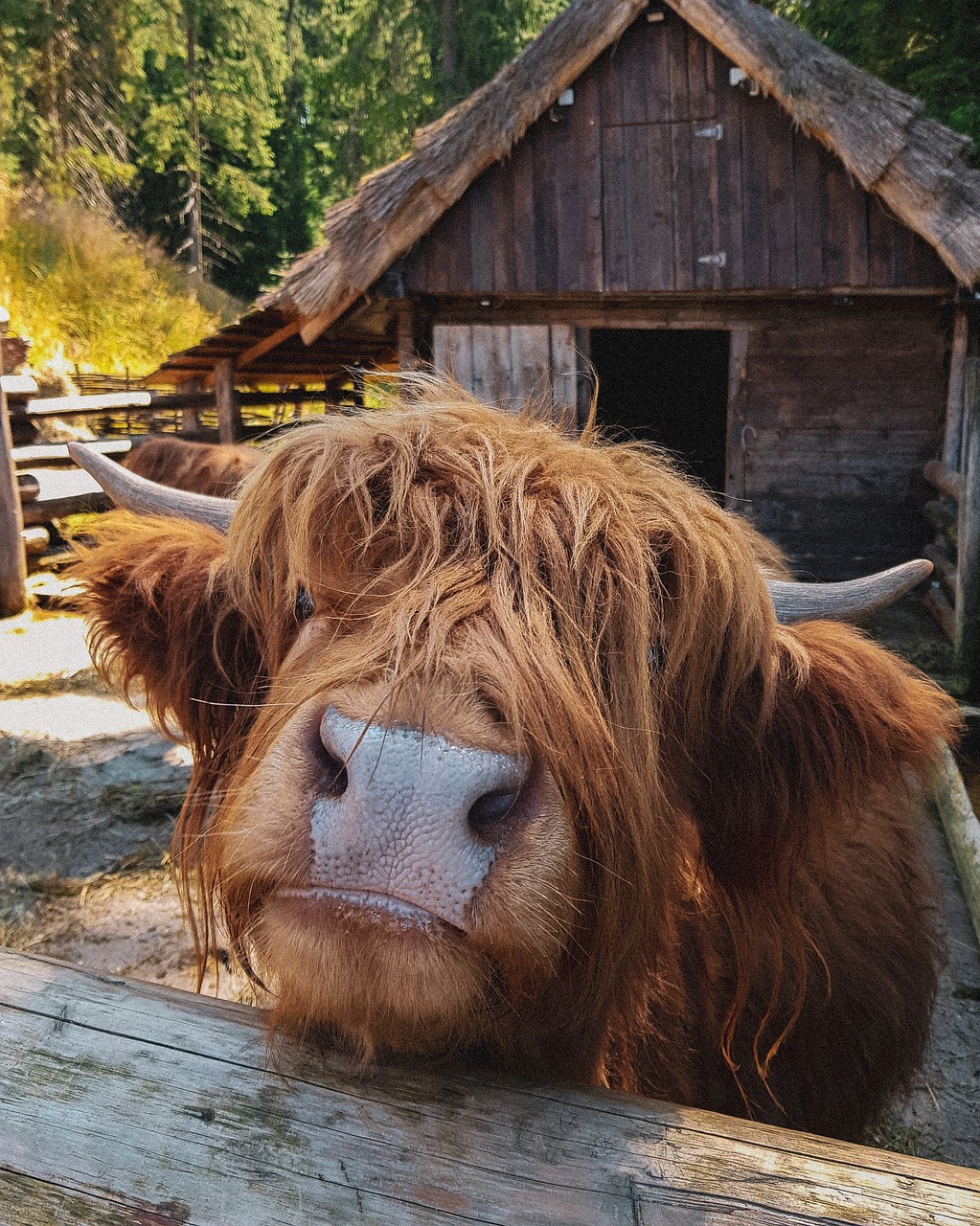With their shaggy coats and majestic horns, Highland cows (pronounced “Highland coo”) have captured the hearts of animal lovers worldwide. These gentle giants, native to the rugged Scottish Highlands, are more than just a picturesque sight; they’re a resilient breed with a fascinating history and unique characteristics.
History and Origin
Highland cattle have roamed the Scottish hills for centuries, with their origins dating back to the sixth century. These hardy bovines were bred to thrive in the harsh Scottish climate, grazing on the sparse vegetation and enduring the harsh winters. Over time, they developed their distinctive long hair and sturdy build, making them well-adapted to the challenging conditions of their native land.
Physical Characteristics
One of the most striking features of Highland cows is their distinctive coat. Their long, shaggy hair covers their entire body, providing natural insulation against the cold and wet Scottish weather. Their coats come in a variety of colors, including red, yellow, black, brindle, and even white. [Insert an infographic comparing Highland cows to other breeds]
In addition to their iconic coats, Highland cows are known for their impressive horns. Both males and females sport these curved horns, which can grow up to several feet long and add to their majestic appearance.
- Height: 4 to 5 feet tall at the shoulder
- Weight: Bulls can weigh up to 1,800 pounds, while cows typically range from 900 to 1,200 pounds
- Lifespan: 15 to 20 years, with some individuals living even longer
Temperament and Behavior
Despite their imposing stature, Highland cows are known for their gentle and docile nature. These Scottish cattle are generally calm and easy-going, making them a popular choice for small farms and even as pets in some cases. However, like any livestock, proper handling and respect for their size and strength are essential.
[Insert a video of Highland cows in their natural habitat]
“Highland cattle are not just picturesque; they’re a hardy breed that represents the resilience of Scottish farming traditions.” – [Scottish Agricultural Expert]
Care and Maintenance
While Highland cows are well-suited to the Scottish climate, they can also thrive in other temperate regions with proper care and management. These resilient animals require a balanced diet of grass, hay, and supplemental feed, as well as access to clean water and shelter from extreme weather conditions.
Uses (Meat, Milk, Tourism)
Highland cattle are primarily raised for their high-quality beef, which is prized for its tenderness and rich flavor. Their milk is also used for producing cheese and other dairy products. Additionally, highland cows have become a popular attraction for farm tourism, with visitors flocking to see these iconic animals in their natural settings.
Highland Cows in Popular Culture
These shaggy bovines have gained a significant following in popular culture, often featured in movies, television shows, and social media. Their unique appearance and gentle demeanor have made them a beloved symbol of Scotland’s natural beauty and agricultural heritage.
Conclusion
From the rugged hills of Scotland to the hearts of animal lovers worldwide, Highland cows have captured our imagination with their distinctive charm and resilience. Whether you’re a farmer, a visitor, or simply an admirer of these magnificent creatures, there’s no denying the enduring appeal of these hairy heroes from the Scottish Highlands.
FAQs
Are Highland cows good pets?
While Highland cows are generally docile, they are still large livestock animals and may not be suitable as traditional pets. However, some farms and sanctuaries offer experiences where visitors can interact with and even bottle-feed Highland calves under proper supervision.
How long do Highland cows live?
Highland cows have a lifespan of 15 to 20 years on average, with some individuals living even longer under optimal conditions.
What do Highland cows eat?
Highland cows are primarily grazers, feeding on a variety of grasses, hay, and other roughage. Their diet may also be supplemented with grains or other feeds, depending on their stage of life and nutritional requirements.
Can Highland cows survive in warm climates?
While Highland cows are well-adapted to the cool, damp climate of Scotland, they can also thrive in other temperate regions with proper management and access to shade and cooling areas during hot weather.

